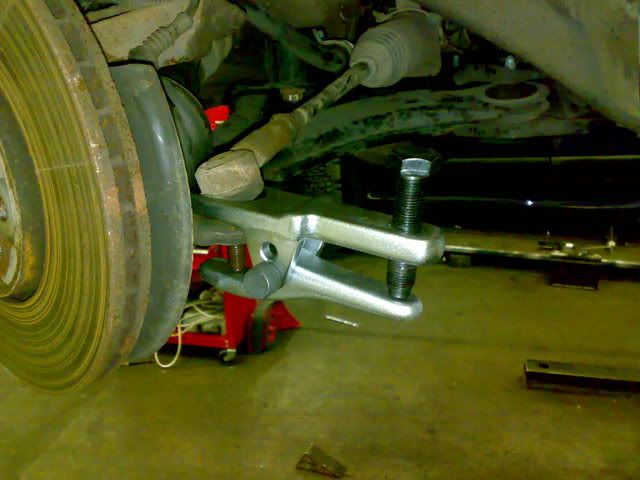I've been looking over my suspension since I'm install quick-struts next month and will have the suspension apart. As far as I know all the suspension parts are original and I have 210,000 miles. So worrying about catastrophic ball joint failures when the wheels flip outward I thought I'd check mine.
After looking online I found some methods to inspect the ball joints. There are no rubber boot tears and there is some grease around the joint. With the wheel off the ground there is no movement I can feel by push/pulling at 9 and 3 o'clock on the tire, and 12 and 6 o'clock.
I saw YouTube videos of other methods...
Raise front end and use large crow bar under tire (6 o'clock) to lift up tire and watch ball joint for up/down play,
.
Also another method that while car is lifted and support undered the control arm prying between lower control arm and ball joint top,
.
The driver side ball joint appears to have no movement.
The passenger side has appears to have 1/16 of an inch in vertical play? I recorded it cause I don't feel I have the good idea yet on what is acceptable and what's not. Passenger ball joint check Note I have the front end on jack stands and put pressure on the lower control arm with a floor jack.
Is this worth the time and money to replace, or leave this go for now?
Do catastrophic failures of the ball joint where you see a wheel flip outward happen that often?
After looking online I found some methods to inspect the ball joints. There are no rubber boot tears and there is some grease around the joint. With the wheel off the ground there is no movement I can feel by push/pulling at 9 and 3 o'clock on the tire, and 12 and 6 o'clock.
I saw YouTube videos of other methods...
Raise front end and use large crow bar under tire (6 o'clock) to lift up tire and watch ball joint for up/down play,
Also another method that while car is lifted and support undered the control arm prying between lower control arm and ball joint top,
The driver side ball joint appears to have no movement.
The passenger side has appears to have 1/16 of an inch in vertical play? I recorded it cause I don't feel I have the good idea yet on what is acceptable and what's not. Passenger ball joint check Note I have the front end on jack stands and put pressure on the lower control arm with a floor jack.
Is this worth the time and money to replace, or leave this go for now?
Do catastrophic failures of the ball joint where you see a wheel flip outward happen that often?















